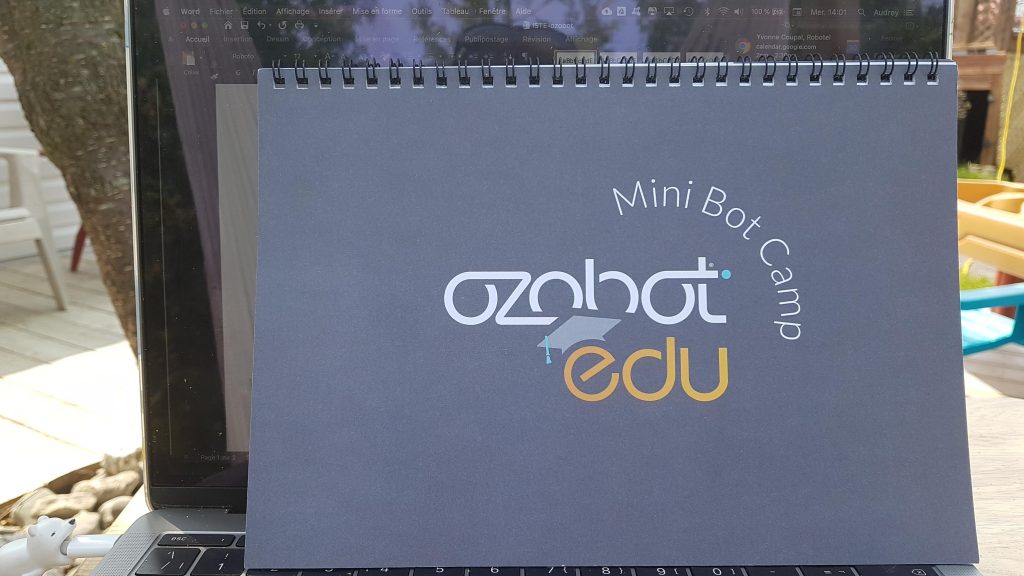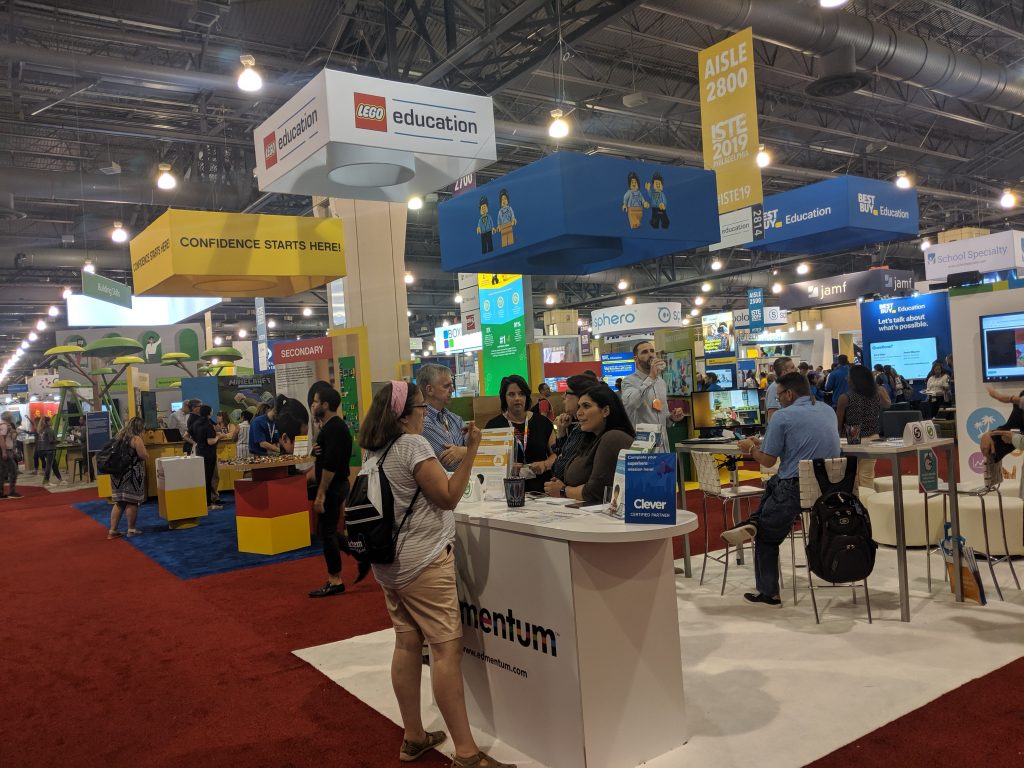Voici quelques nouveautés à propos d’Ozobot et de LEGO Education partagées à l’occasion du congrès annuel de l’International Society for Technology in Education (ISTE), qui s’est tenu fin juin à Philadelphie.
Ozobot : Une nouvelle plateforme Ozobot Classroom pour l’automne
Plusieurs personnes savent que l’un de mes grands coups de cœur côté outils numériques est Ozobot.
Evo et Bit sont les petits robot conçus par Ozobot. On peut les programmer à la fois « en ligne » et « hors ligne ». La portion hors ligne se déroule grâce à un code de couleur. Evo et Bit détectent les combinaisons de couleurs sur leur chemin et répondent en conséquence. Par exemple, s’ils croisent 3 carrés de couleur vert, noir et rouge dans cet ordre, ils effectueront un virage à gauche de 90 degrés à la prochaine intersection sur leur tracé noir. La portion « en ligne » permet de les programmer à l’aide de l’éditeur OzoBlockly, basé sur le langage Blockly de Google, un langage simple d’initiation à la programmation par blocs, rappelant par ailleurs Scratch.
Bit est le robot de base, qui détecte les couleurs (capteur optique) et peut être programmé. Evo possède en plus un capteur de distance et un haut-parleur, offrant plus de possibilités.
Parmi les nouveautés annoncées par l’entreprise, on attend la venue du nouvel outil en ligne, Ozobot Classroom, qui permettra à l’enseignant d’obtenir des données sur l’utilisant des robots par les élèves et la complétion d’activités données. Le fondateur et directeur général d’Ozobot, M. Nader Hamda, nous a confirmé sur place que le tout serait disponible à la rentrée (en anglais).
Pour apprendre à utiliser Ozobot en français, les enseignants peuvent découvrir la formation gratuite offerte par le Campus RÉCIT.

LEGO Education : Programme « Master Educators » et activités pour développer la confiance dans les STIAM
Une autre entreprise qui a fait sensation dans l’immense salon des exposants du congrès est sans doute LEGO Education. Quelques notes à son propos.
L’entreprise a profité du congrès de l’ISTE pour dévoiler sa nouvelle cohorte de « Master Educators ». Ce programme, qui reconnaît l’expertise d’enseignants qui en font la demande, permet entre autres d’être mis au courant des nouveautés de LEGO avant leur sortie et de donner des commentaires à leur sujet pour en améliorer le développement. L’entreprise prévoit étendre son réseau de façon internationale d’ici peu. À surveiller si l’univers LEGO fait partie de votre enseignement!
Connaissez-vous les activités offertes par LEGO visant à développer la confiance des élèves envers les STIAM (sciences, technologies, ingénierie, arts, mathématiques – STEAM, en anglais)? Elles ont été développées dans la foulée d’une étude ayant mis en lumière le fait que l’intérêt des jeunes pour ces domaines est grandement favorisé par la confiance. Téléchargez ici les activités (en anglais).





 Recevez l'Info #DevProf et l'Hebdo pour ne rien manquer des nouveautés de l'École branchée!
Recevez l'Info #DevProf et l'Hebdo pour ne rien manquer des nouveautés de l'École branchée!




